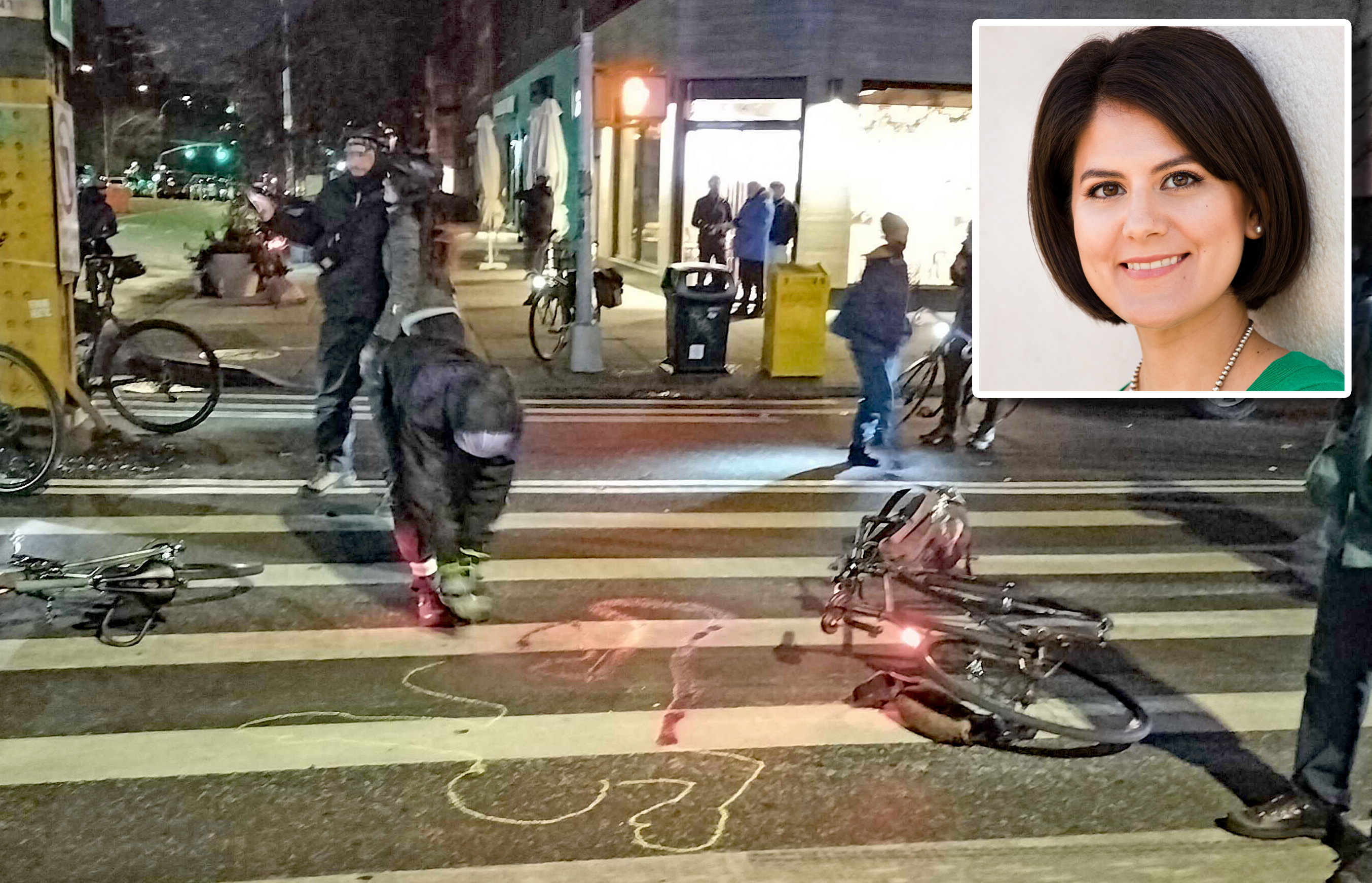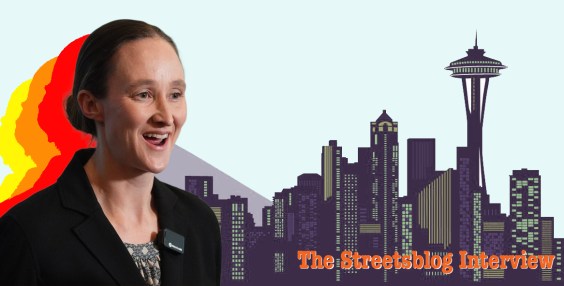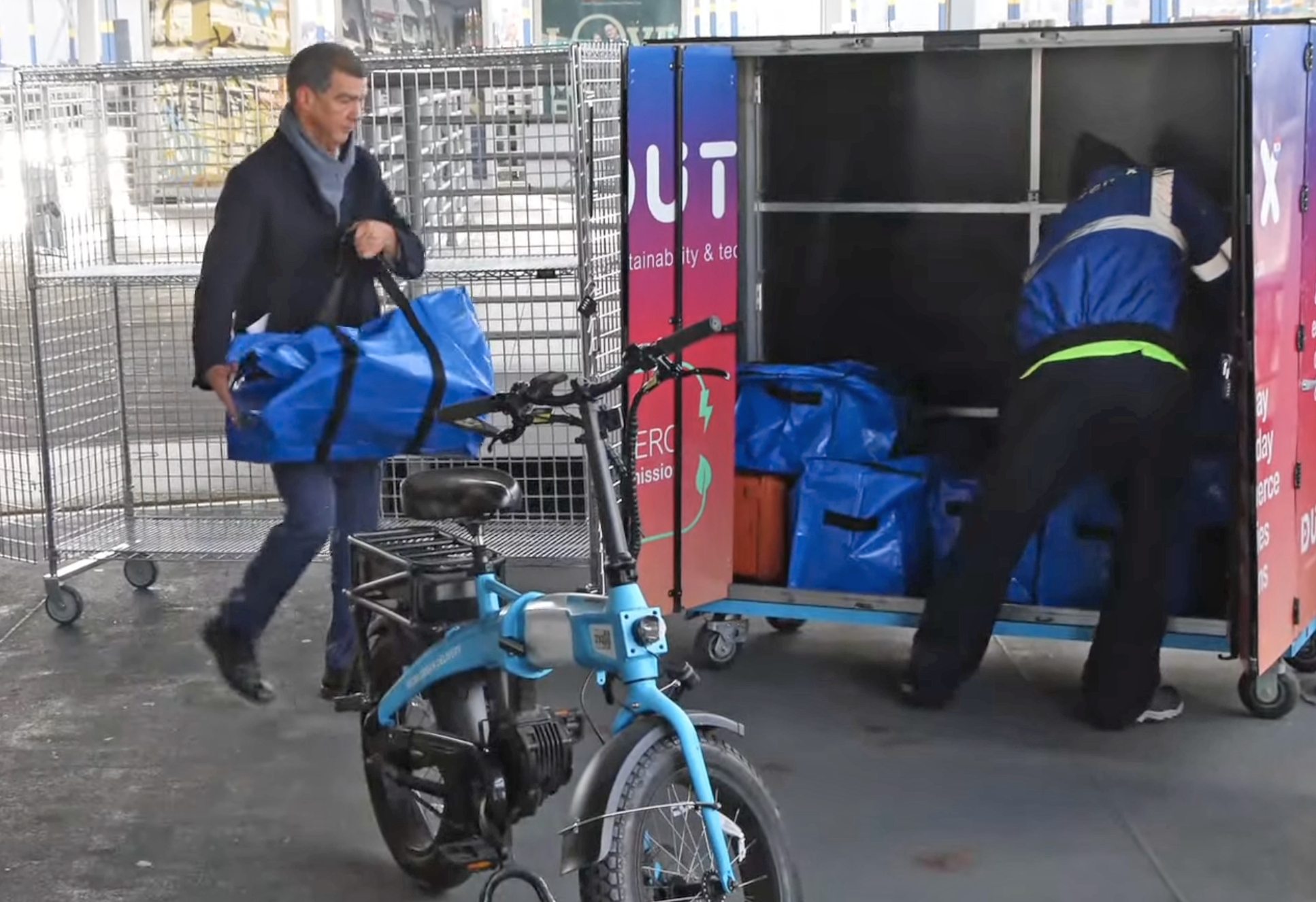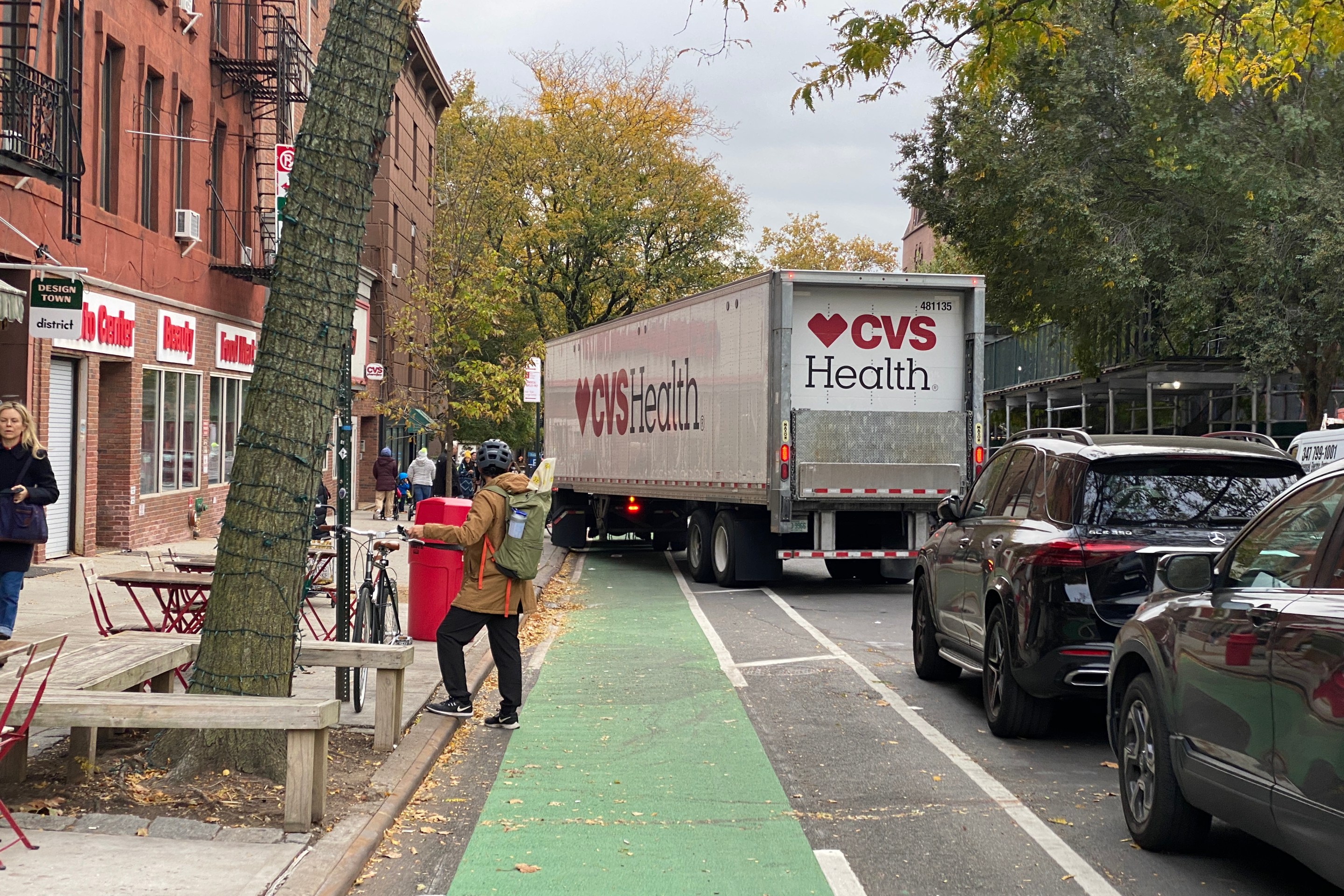When Shorewalkers founder Cy Adler set out to walk Manhattan’s 32-mile rim in 1985, his small group encountered abandoned piers, bulkheads, active train yards, busy highways, dirt paths, and woodlands, and had to skirt private property where access was illegal.

That first circumambulation of Manhattan became the Great Saunter, which now takes place the first Saturday of every May. On May 3, some 3,000 walkers will attempt the 38 annual Great Saunter.
Due to advocacy by the late Adler and many others, shoreline access in Manhattan has grown dramatically. Still, 4.5 miles of gaps remain on the Manhattan Waterfront Greenway loop, where walkers will detour to city streets.
The New York City Greenways Coalition, of which Shorewalkers is a member, is a group of organizations advocating for the city to complete the Manhattan Waterfront Greenway and expand equitable access to greenways across all five boroughs. The upcoming Citywide Greenways Plan, slated to be released this spring, gives the group hope that the Shorewalkers – and thousands of others – will be able to walk a continuous 32-mile Greenway loop by 2030.
As participants saunter along the waterfront, they will take a tour through the complicated, ongoing work of completing the greenway loop. They will witness huge, recent improvements in greenway access, but also disparities in greenway investment in different neighborhoods across the borough:
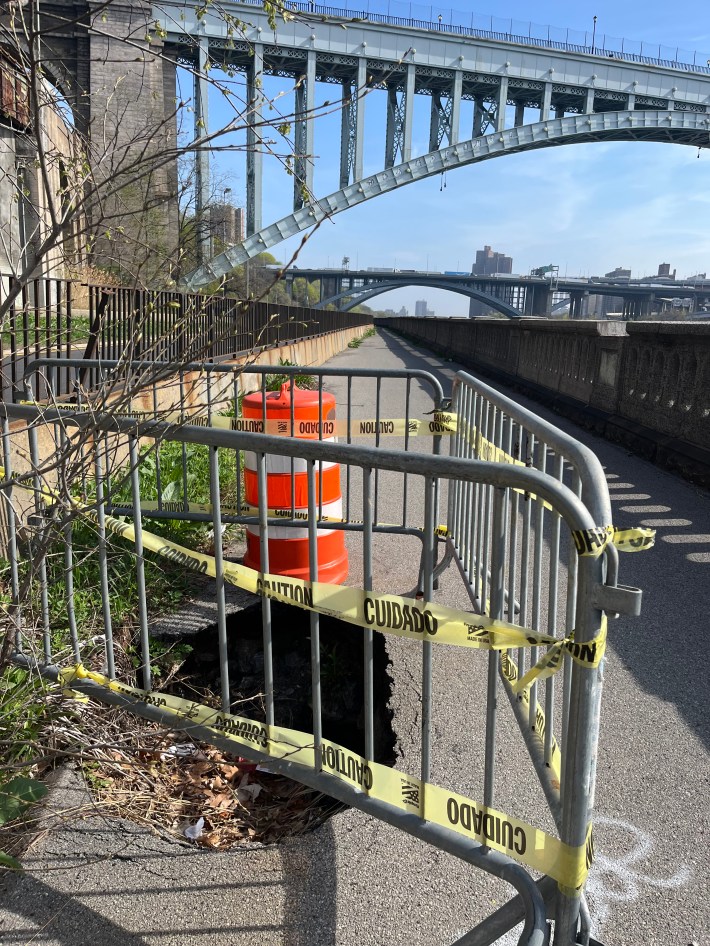
- Walking north along the Hudson River Greenway, Saunterers will observe state-of-the-art paths in Midtown that give way to major maintenance and resilience issues further uptown. When they reach 181st Street, they will be forced to take a two-mile detour on city streets due to the latest in a series of sinkholes that has closed that section of the Greenway three times in the past two years. The Greenways Coalition and other advocates have called for long-term resiliency improvements to prevent further sinkholes, as well as the development of a waterfront path to avoid the sinkhole-prone upper path.
- In Inwood and East Harlem, they will pass the longest remaining gaps in the Greenway loop, a reflection of a historical lack of investment in these neighborhoods. In these neighborhoods, stretches of Greenway with multiple ongoing closures punctuate what is largely an inaccessible waterfront, and as on the west side, sinkholes are a recurrent hazard.
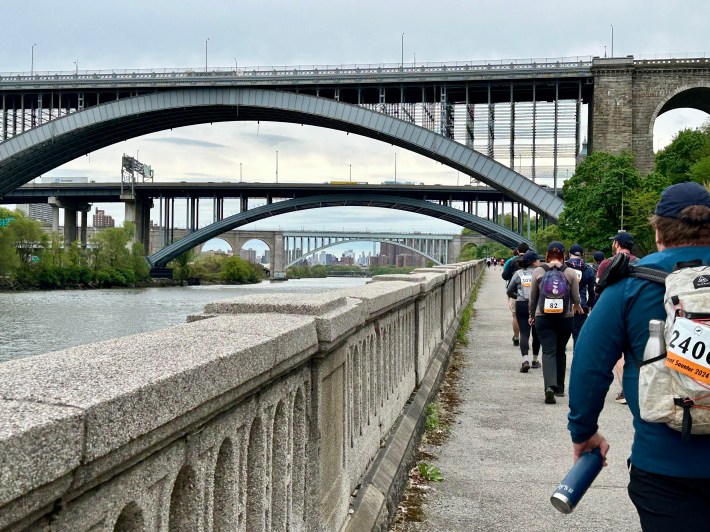
- After navigating these gaps, the Saunterers will rejoin the Greenway near East 111th Street. The condition of the Greenway will improve as they travel south along the Upper East Side, but they will continue to encounter pinchpoints and gaps, including a section between East 78th to East 71st Street that has been closed for four years due to construction. Coalition-member Friends of East River Esplanade is currently collecting petition signatures to demand that the city to accelerate the long-delayed reopening.
- As they travel further south down the East River, Saunterers will enjoy the newest section of the Greenway, the breathtaking East Midtown Esplanade opened in 2023. Here, they may pause and imagine what it would be like if the Esplanade extended across the remaining gaps in the East River Greenway.
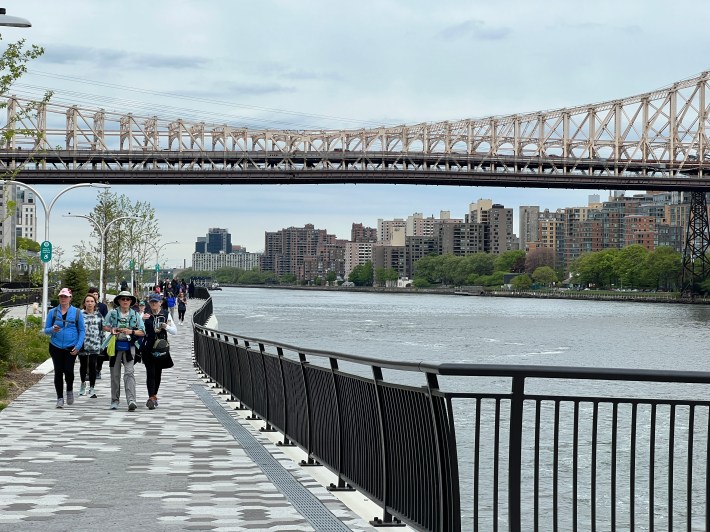
- Finally, they will navigate ongoing construction closures in the Lower Manhattan, where the City is implementing major climate resilience projects along the greenway corridor. Some notorious pinch points like the one (below right) near East 14th Street are slated to be widened as part of this work — here as elsewhere, the Shorewalkers will look forward with hope to a Greenway that will continue to grow and improve in years to come.
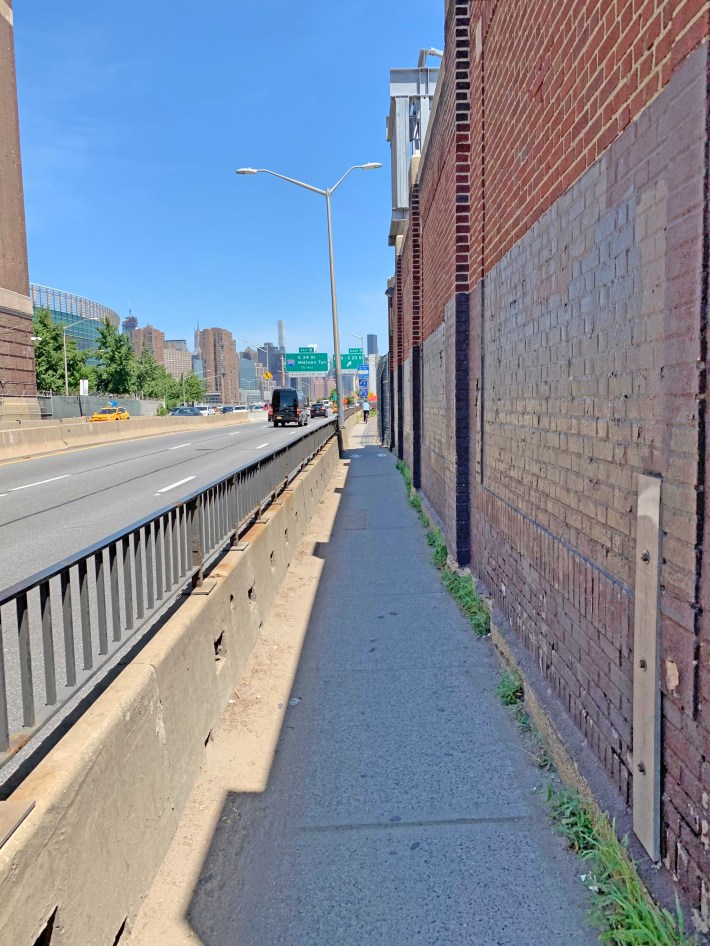
But Shorewalkers have noticed that the Manhattan Waterfront Greenway has come a long way. The Greenways Coalition is working with the city to continue to grow this tapestry of greenway segments into a continuous Manhattan waterfront loop, which will in turn be part of a citywide greenway network — and much of it part of the Maine-to-Florida East Coast Greenway. When complete, the Manhattan waterfront loop will reconnect communities across the island to our waterfront, creating safe off-road walking and biking routes, providing much-needed access to open space, and protecting our communities from climate change.
The Coalition has played a key role in advocating for these greenway projects to be planned, designed, and funded, most recently helping to successfully advocate for funding the 10th Avenue Greenway in Inwood and facilitating community conversations about the ongoing Manhattan Greenway Harlem River project, but there is more work to be done.
The Greenways Coalition is advocating for the city to:
- Release the Citywide Greenways Plan without delay. The City Council required the Plan to be released by Dec. 1, and it is now nearly six months overdue.
- Use a whole-of-government approach, in collaboration with community partners, to rapidly implement the Citywide Greenways Plan and build a truly interconnected citywide network. Implement much-needed greenway improvements on schedule to avoid extended construction-related closures.
- Prioritize Greenway investments in neighborhoods that have not historically received them in order to ensure that all New Yorkers have access to open space, waterfronts, and safe walking and biking routes.
- Improve maintenance and resilience of existing greenways to ensure that they are resilient to climate change, prevent issues like sinkholes before they happen, and respond to such issues when they do occur. This includes ensuring that there are safe on-street routes available in addition to off-street greenways so that greenway users who are forced to detour due to construction or maintenance issues have safe alternatives.
- Connect the citywide greenway network to regional networks, including the East Coast Greenway, Empire State Trail, and Long Island Greenway, in order to connect New Yorkers to our neighbors and destinations in the region.
The Greenways Coalition and Shorewalkers look forward to an interconnected network of Greenways and the health, economic and other benefits they will bring to their local neighbors, cyclists, walkers, runners, and all New Yorkers.


